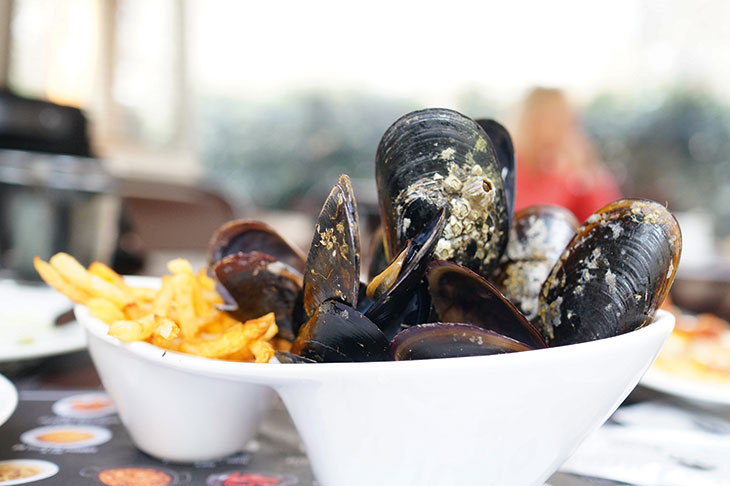I have fallen in love with the c2c, a whisker of a train that is never delayed. It operates between London and Essex; Fenchurch Street and Shoeburyness. Its name stands for ‘anything you want it to’, according to the company’s website — everything from ‘capital to coast’ to ‘commitment to customers’. Over the past year, I have become a complete convert, a cheerful champion of the c2c as it whisks me into Essex and on to the north side of the Thames Estuary, where I like to walk with a man called Malt.
Joseph Conrad, who lived in Stanford-le-Hope, a town near Tilbury on the c2c line, wrote: ‘The estuaries of rivers appeal strongly to an adventurous imagination. This appeal is not always a charm.’
True. The view on to the DP London World Gateway port at Tilbury; the bleak wilderness of Canvey Island; fleets of trolleys sinking into the bog as the fog descends — these sights do not offer obvious charm. But the fishing town of Leigh-on-Sea, 40 miles from central London, is sufficient for any charm-seeker.
The fishing community at Leigh has been going for around 1,000 years, inhabited by infamous naval names such as Richard Haddock. He was knighted by Charles II and became Commissioner of the Navy after the Battle of Solebay. I could only assume he was the inspiration behind Captain Haddock of the Tintin stories until I learned the truth. In fact, Hergé’s wife, Germaine, informed her husband one night that she had cooked him ‘a sad English fish — haddock’.
Malt and I approached Leigh-on-Sea from Southend-on-Sea, where we had stayed the night before. Though only three miles west, Leigh has a very different atmosphere to its neighbouring town. There are no rollercoasters swinging with screaming children; no glass cabinets of candy floss; no casinos, clubs, nor pier.








Comments
Join the debate for just £1 a month
Be part of the conversation with other Spectator readers by getting your first three months for £3.
UNLOCK ACCESS Just £1 a monthAlready a subscriber? Log in